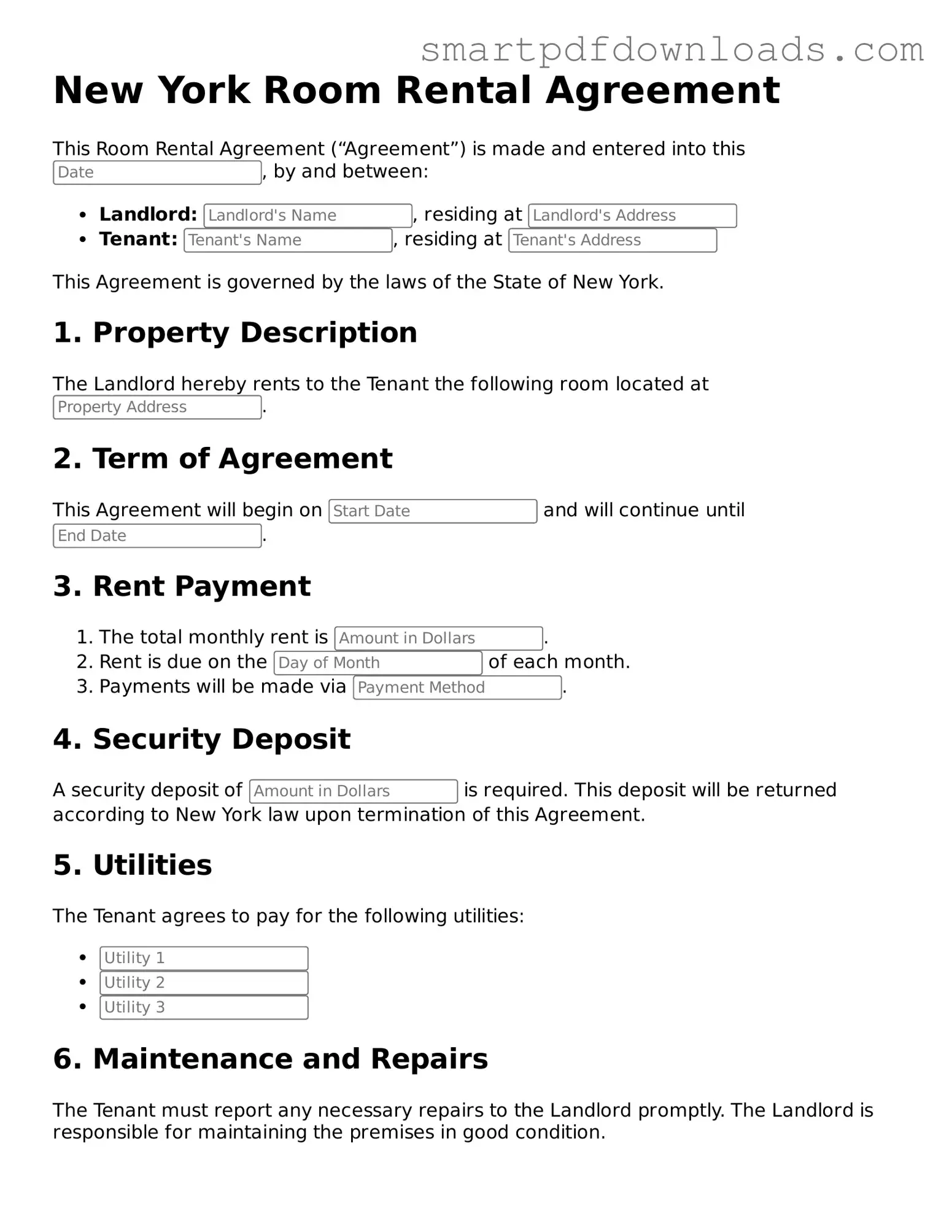Legal Room Rental Agreement Form for the State of New York
The New York Room Rental Agreement form is a legal document used to outline the terms and conditions between a landlord and a tenant renting a room in a residential property. This agreement ensures that both parties understand their rights and responsibilities, providing a clear framework for the rental arrangement. By having a well-defined agreement, potential disputes can be minimized, fostering a positive living experience for everyone involved.
Edit Room Rental Agreement Online
